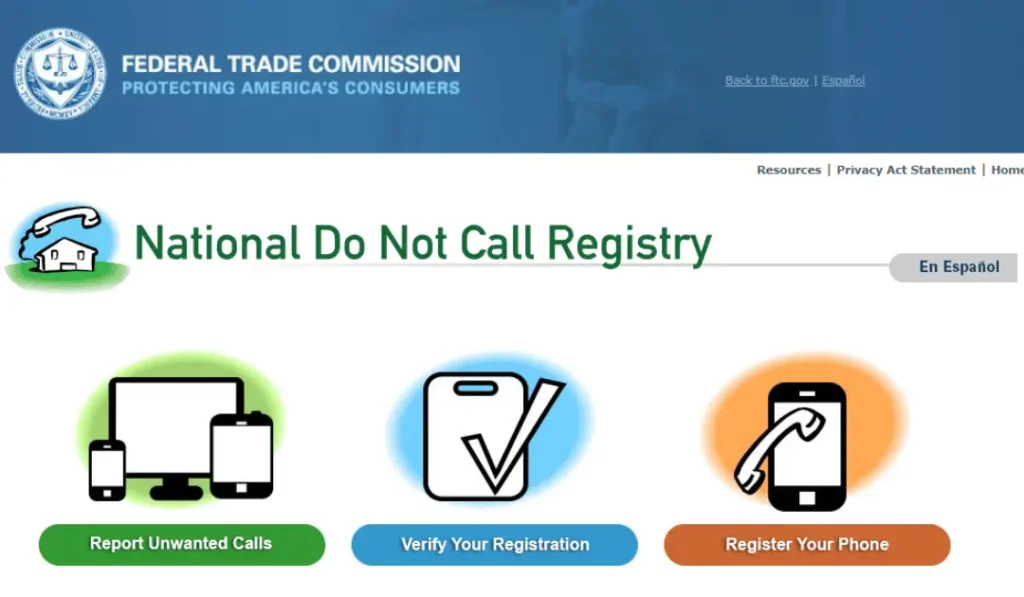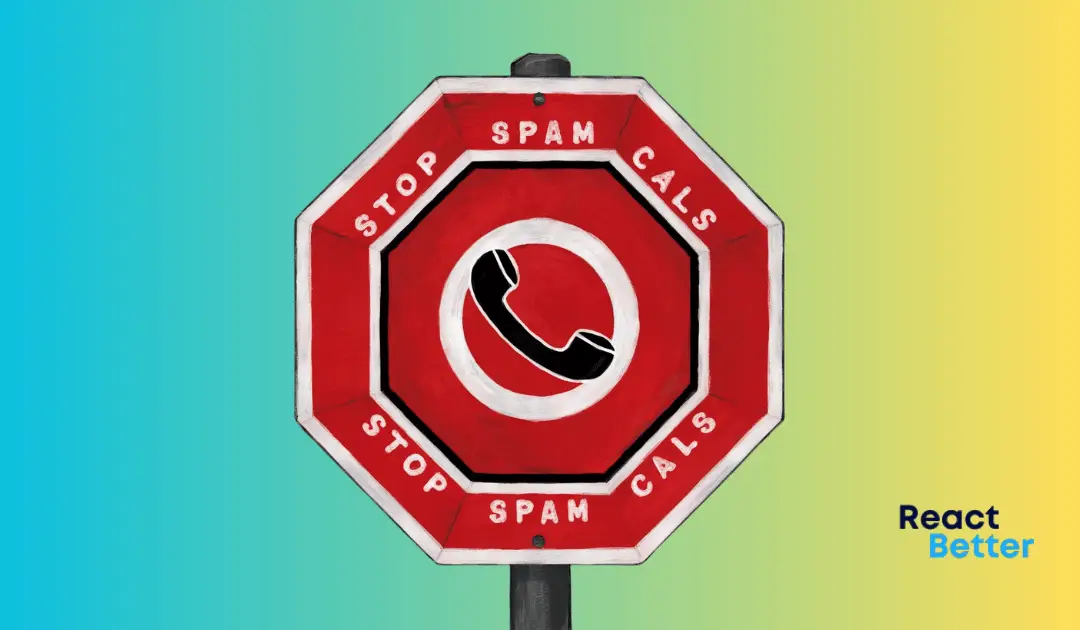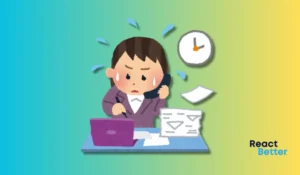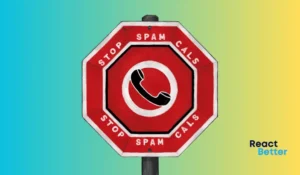According to a report by First Orion, 53% of people say they received more scam calls in 2022 than 2021. This alarming statistic highlights the need for effective strategies to combat this growing issue.
Spam calls not only disrupt our daily lives but can also lead to more serious consequences, such as financial fraud and identity theft.
Here, Let’s find out the best ways to handle spam calls, protect your personal information, and maintain your peace of mind.
Table of Contents
1. Understanding the Nature of Spam Calls
Before we explore the various methods of dealing with spam calls, it’s essential to understand what they are and how they work.
Spam calls, also known as robocalls or unsolicited calls, are typically automated phone calls that deliver a pre-recorded message or attempt to engage you in a conversation. These calls often originate from fake or spoofed numbers, making it difficult to identify the true caller.
Spam callers have various objectives, ranging from selling products or services to phishing for sensitive information. Some common types of spam calls include:
- Telemarketing calls offering dubious products or services
- Scam calls claiming to be from government agencies, such as the IRS or Social Security Administration
- Robocalls delivering political messages or surveys
- Calls offering free trips, prizes, or other too-good-to-be-true deals
2. The Impact of Spam Calls
Spam calls can have a significant impact on both individuals and society as a whole. On a personal level, these calls can be incredibly annoying and disruptive, often interrupting important moments or conversations. They can also cause undue stress and anxiety, particularly for elderly or vulnerable individuals who may be more susceptible to scams.
From a broader perspective, spam calls can strain telecommunication networks and waste valuable resources.
| According to a study by Truecaller, Americans lost approximately $10.5 billion to phone scams in 2018 alone. This staggering figure underscores the need for proactive measures to combat the spam call epidemic. |
3. Identifying Spam Calls
The first line of defense against spam calls is learning how to identify them. While not foolproof, there are several telltale signs that can help you spot a potential spam call:
- Calls from unknown or unfamiliar numbers, especially those with area codes you don’t recognize
- Calls that come in at odd hours, such as early in the morning or late at night
- Calls that display “Unknown,” “Private,” or “Blocked” instead of a phone number
- Calls that hang up after one or two rings, only to call back repeatedly
If you suspect a call might be spam, it’s generally best to let it go to voicemail. Legitimate callers will usually leave a message, while spam callers will often hang up without leaving one.
Also Read: 25 Comebacks For Low Ball Offers Without Being Rude
4. Using Call Blocking Features
Most modern smartphones come equipped with built-in call blocking features that can help reduce the number of spam calls you receive. Here’s how to use them on popular devices:
iPhone
1. Go to the Phone app and tap on the “Recents” tab
2. Find the spam call in your call history and tap the “i” icon next to it
3. Scroll down and tap “Block this Caller”
Android
1. Open the Phone app and tap on the three-dot menu icon
2. Select “Settings” and then “Blocked numbers”
3. Tap “Add a number” and enter the spam caller’s number
In addition to built-in features, there are also numerous third-party call blocking apps available, such as RoboKiller, Truecaller, and Hiya. These apps use advanced algorithms and user-reported databases to identify and block potential spam calls.
5. Registering on the National Do Not Call Registry

Another effective way to reduce the number of spam calls you receive is by registering your phone number on the National Do Not Call Registry. This free service, maintained by the Federal Trade Commission (FTC), prohibits most telemarketers from calling numbers on the registry.
To register your number, visit www.donotcall.gov or call 1-888-382-1222 from the phone number you wish to register.
Keep in mind that while the registry can significantly reduce the number of telemarketing calls you receive, it may not stop all spam calls, particularly those from scammers who operate outside the law.
5. Reporting Spam Calls
If you do receive a spam call, it’s important to report it to the proper authorities. In the United States, you can file a complaint with the FTC by visiting www.ftc.gov/complaint or calling 1-877-FTC-HELP.
When filing a complaint, be sure to provide as much information as possible, including the date and time of the call, the phone number that appeared on your caller ID, and any details about the content of the call.
You can also report spam calls to your phone carrier, who may be able to block the number from calling you in the future. Many carriers have dedicated web pages or phone numbers for reporting spam calls, so be sure to check with your provider for specific instructions.
Also Read: Craft the Perfect Refund Email(With Examples)
6. Protecting Your Personal Information
One of the most insidious aspects of spam calls is the potential for fraud and identity theft. Scammers often use spam calls to trick people into revealing sensitive personal information, such as Social Security numbers, credit card details, or bank account information.
To protect yourself from these schemes, follow these essential tips:
- Never give out personal information over the phone unless you initiated the call and are certain of the caller’s identity
- If a caller claims to be from a legitimate company or organization, hang up and call them back using a number you know is genuine, such as one listed on their official website
- Be wary of callers who create a sense of urgency or try to pressure you into making a decision on the spot
- Remember that government agencies, such as the IRS or Social Security Administration, will never call you to demand immediate payment or threaten legal action.
7. Educating Yourself and Others
One of the most powerful tools in the fight against spam calls is education. By staying informed about the latest scams and tactics used by spammers, you can better protect yourself and your loved ones.
Make an effort to share your knowledge with friends, family members, and colleagues, particularly those who may be more vulnerable to phone scams, such as the elderly or those who are less tech-savvy.
Encourage them to be cautious when answering calls from unknown numbers and to never give out personal information over the phone unless they are absolutely certain of the caller’s identity.
Examples Responses to Handle Spam Call

- “I’m sorry, but I don’t accept unsolicited calls. Please remove me from your list.“– This response is polite but firm, clearly stating your unwillingness to engage with the caller. It also requests that they remove your number from their call list.
- “I’m not interested in any products or services. Please don’t call me again.”– This straightforward response expresses your lack of interest in the caller’s offerings. It also instructs them not to contact you in the future.
- “I’m sorry, but I’m currently on a spaceship headed to Mars. Can you call back in a few light-years?” – Confuse the spammer with an absurd scenario. Implies you’re unavailable for a comically long time.
- “Congratulations! You’re the 1 millionth caller! Please hold while we prepare your grand prize of absolutely nothing!” – Excite the spammer with the prospect of a prize. Deliver a disappointing punchline.
- “I’m sorry, but my phone only accepts calls from people I know and like. And let’s be honest, you’re neither.” – Politely explain your phone’s “limitations”. Bluntly express your disinterest in the spammer.
- “I appreciate your offer, but I’m already drowning in debt. Can you call back when I’ve won the lottery?” – Feign interest in the spammer’s likely financial offer. Suggest an improbable scenario for a future call.
- “Thank you for calling the Department of Redundancy Department. How may I repeatedly assist you with the same thing over and over again?” – Answer as a fictitious, nonsensical department. Frustrate the spammer with circular, repetitive language.
- “I’m on the National Do Not Call Registry. Calling me is a violation of the law.”– If you have registered your number on the National Do Not Call Registry, you can use this response. It informs the caller that they are breaking the law by contacting you.
- “I don’t have time for this. Goodbye.“ – This short and direct response conveys that you are busy and unwilling to engage in conversation. Ending the call abruptly sends a clear message that you are not interested.
- “I’m going to report this number to the authorities for harassment.“ – This response threatens legal action against the caller for their persistent unwanted calls. It may deter them from calling you again in the future.
- “I think you have the wrong number. There’s no one here by that name.” – This response suggests that the caller has reached the wrong person. It may prompt them to remove your number from their list, believing it to be incorrect.
- “I’m not comfortable discussing personal information over the phone.“ – This response is useful when a caller asks for sensitive information, such as financial details. It establishes boundaries and protects your privacy.
- “I don’t make decisions based on unsolicited calls. Please send me written information.“ – This response indicates that you require official documentation before considering any offers. It may discourage the caller, as most spam callers are not willing to provide written information.
- “I’m recording this call for quality assurance purposes.” – This response implies that you are documenting the conversation, which may unsettle the caller. It can be effective in deterring them from making further unsolicited calls.
- [Silence] – Sometimes, the best response is no response at all. By remaining silent or not engaging, you deny the caller the opportunity to continue their pitch.
Remember, the most effective way to deal with spam calls is to not engage with the callers and to register your number on the National Do Not Call Registry if you haven’t already done so.
Finally
By understanding the nature of these calls, learning how to identify them, and using the various tools and strategies available, you can significantly reduce their impact on your daily life.
Remember to stay vigilant, protect your personal information, and report any suspicious calls to the proper authorities. By working together and sharing our knowledge, we can help create a safer, more secure telephonic environment for everyone.
Frequently Asked Questions (FAQs)
Q1: What should I do if I receive a spam call?
If you receive a spam call, the best action is to not answer the call. Let it go to voicemail. If the call is from a legitimate source, they will likely leave a message. Answering the call or interacting with the spammer may indicate that your number is active, potentially leading to more spam calls.
Q2: How can I block spam calls on my phone?
Most smartphones have built-in features to block unwanted calls. Go to your phone’s settings, find the “Block Numbers” or “Call Blocking” option, and add the spam number to the block list. You can also download third-party apps like Truecaller, RoboKiller, or Hiya, which maintain databases of known spam numbers and offer additional call-blocking features.
Q3: Should I ever give out personal information to unsolicited callers?
No, never give out personal information such as your social security number, credit card details, or bank account information to unsolicited callers. Legitimate organizations, like your bank or the IRS, will never ask for sensitive information over the phone. If you are unsure, hang up and call the organization directly using a verified number.
Q4: What should I do if I accidentally answered a spam call?
If you accidentally answered a spam call, hang up immediately. Do not engage with the caller or press any buttons, even if they claim you can opt out of future calls by doing so. Engaging with the spammer may only lead to more calls. If you are concerned about your number being active, you can register on the National Do Not Call Registry.
Q5: Can I report spam calls to any authority?
Yes, you can report spam calls to the Federal Trade Commission (FTC) by visiting their website or calling 1-888-382-1222. You can also file a complaint with the Federal Communications Commission (FCC) by visiting their website or calling 1-888-225-5322. Reporting spam calls helps these agencies identify and take action against illegal callers.
- 30+ Funny Ways to Answer ‘”Are You Still Alive?” Text - June 29, 2024
- 15+ Genius Responses to Bail on Any Event (Without Offending Anyone!) - June 28, 2024
- 60+ Heartfelt Ways to Say “You Make Me Feel Special” - June 27, 2024





